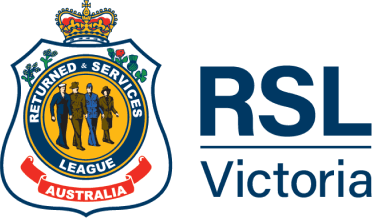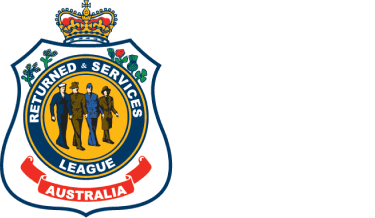Written by: Sue Smethurst and Megan Wallens
Photography: Robert Blackburn and The Australian War Memorial
Corporal Hugh Hince, walked the Kokoda Track nine times during his WWII service with the 1st Australian War Graves Maintenance Unit. Nine times through one of the most gruelling theatres of war, searching for and retrieving the remains of soldiers lost on the frontline. His is a story of resilience and faith.
Brothers Kevin and Trevor Hince have a good-natured chuckle when they reflect on their father’s final occupation.
“When he returned from the war, he worked in hardware and he was a furniture maker for most of life, but he was jack of all trades and before he retired, he took a job as an undertaker. Life came full circle,” Kevin said.
“He made the coffins, drove the hearse and embalmed the bodies,” Trevor added, recalling how his father would sometimes visit, parking the hearse complete with its passenger, outside his home.
“I was living in Sunbury at the time and if he had to pick up a body at the airport he’d pop in for a cup of tea. He had a wonderful sense of humour and he had so many stories to tell about that time of his life.”
Perhaps it was Corporal Hugh Hince’s ability to find a smile when it was needed most, blended with a deep and devout Christian faith, that enabled him to survive one of war’s most gruelling and unsung roles - tending to the dead in the jungles of Papua New Guinea.
In September 1943, 26-year-old Corporal Hugh Hince arrived in Port Moresby and was assigned to the 1st Australian War Graves Maintenance Unit. He was initially tasked with searching for and retrieving the remains of soldiers lost on the frontline. He’d bury them in makeshift cemeteries dotted along the Kokoda Track and maintain the graves and the cemetery grounds.
Later, he was stationed at the Bomana War Cemetery, nineteen kilometres from Port Moresby where soldiers from all sides of the conflict would eventually find a dignified final resting place.
Eventually, Corporal Hugh Hince and his colleagues undertook the exhumation and repatriation of the bodies they’d already buried along the Kokoda track, returning them to Bomana.
The remains of 3824 Australian soldiers are buried there, about 700 of whom are yet to be identified.
Corporal Hince’s extraordinary service is detailed in his diaries which were found by his family almost by accident, and are now part of the Australian War Memorial Collectio
“Dad died in 1997, and some years after that (2014), mum was downsizing into a nursing home and we found the diaries in Dad’s desk when we were cleaning out the house,” Trevor said.
“We’d known since we were kids that they were there, but none of us took much interest because Dad never spoke about his time in the war.”
"The diaries were his, and they were private, so that was that."
Trevor Hince
“We’d never actually seen the diaries or his war medals until we were cleaning out that desk,” Kevin said. “He never wore his medals, he didn’t have any involvement with other veterans, when he returned home, he just got on with life.”
Their father wrote in the small army issue notebooks every day, his beautiful cursive letters offering a unique insight into one of the most brutal theatres of World War Two. In one entry, he wrote about trying to locate the bodies of missing soldiers and coming across “2 pairs Aussie boots sticking out of the ground. Dug and found they were Japanese. Located Sgt W. Put in bag to take back to Bomana.”
It was a role that took Corporal Hince and a team of local New Guinean men straight into the heart of the Kokoda Battle as they made their way up and down the treacherous track after each bloody conflict looking for the fallen.
They’d gather up the bodies into bags and transport them to the closest local cemetery where the soldiers would be buried until their eventual return to Bomana.
Corporal Hince regularly tended to the cemeteries located at Eora Creek, Brigade Hill, Mission Hill, Kokoda War cemetery and Templeton’s Crossing. He meticulously recorded the details of every soldier he buried, including noting the row, grave number, army number, rank, name initials, unit, date of death and religion if known.
Before the end of his first month in PNG, Corporal Hince noted in his diary that he’d climbed 6,000 steps and was “done in” reaching a cemetery where he relocated the graves of sixteen Japanese soldiers.
On one of his missions, he was called deep into the notorious Owen Stanley Ranges to Isurava. There he located and repatriated the body of missing Private Bruce Kingsbury who was awarded a VC for courageously charging into intense fire from the Japanese to protect his platoon which had been under continual enemy attack for two days. Private Kingsbury was killed by sniper fire.
Corporal Hince’s work was not limited to the Allies, he ensured that fallen Japanese had an equally dignified burial.
"He offered dignity to everyone, even the enemies."
“In many ways he was quite well placed to do the job he did, because he was a very religious man, a man of very deep faith and he treated this time as a service to the community. Every now and then in his diary he’d write that he ‘saved’ someone he met along the track. He didn’t mean physically, he meant spiritually,” Trevor said.
“The diaries showed us a very different side to him,” Kevin said, “I couldn’t understand how anyone could dig up a body and carry it around in a bag. It is terrible stuff that he did, but he did it with a good purpose in his heart, to give all of those men, from all sides, a decent burial. I don’t know how he ever returned to normal life afterwards, but he did, and we think it must have been his faith that carried him through.”
“But, the diaries also reinforced what we did know about him,” Trevor added, “he was a very hard worker and right throughout his life, it was hard to keep up with him. And he was terribly charismatic, he could talk to anyone and get along with everyone. His personality would’ve definitely helped him working with the local people and getting them to trust and work with him.”
It was when the family sat down and read Hugh’s diaries that they discovered he’d also written extensively to their mother Olive. The couple had two young sons, Stanley and Kevin, when Hugh was sent to war and his deep longing for his wife and family was clear.
Sadly, much to the family’s chagrin, those letters have never been found and the only hints they have as to their content comes from Hugh’s diaries.
Kevin said, “He wrote to her every day. We have no idea what happened to those letters and it wasn’t the sort of thing we’d ask Mum, it was deeply personal, which is a great shame and I regret that now.”
Hugh was an enterprising soldier, he didn’t drink or smoke, so he traded his vouchers for cash with the Americans who couldn’t get enough of either, and in his spare time, he cut soldiers hair.
He regularly sent money home to Olive, and when he returned, he worked two and three jobs saving up to buy their family home in Thornbury where Trevor and their youngest brother Paul came along.
"There are so many things we wished we’d asked in hindsight,"
Trevor Hince
By the middle of July 1944, Hugh had applied for a transfer back to Bomana War Cemetery and was very pleased when relief arrived. His tour with the Graves Maintenance Unit lasted eleven months and two weeks. In his diaries he wrote that he was “very relieved in mind” to learn that his request had been approved. Using Hugh’s diaries his family plotted his tracks and estimate he traversed the Kokoda Track approximately nine times during his service.
Today the Bomana War Cemetery remains a revered and sacred place in the story of Australian service. Thousands of white headstones, in pin-point perfect lines, stretch sombrely across manicured lawns and gardens, the shadow of the Owen Stanley Ranges lingers in the background.
The cemetery was designed by Mr A.G Robertson and formally unveiled by the Governor-General of Australia, Field Marshall Slim on 19 October 1953.
Hugh would undoubtedly be proud of the legacy, he and his mates of the 1st Australian War Graves Maintenance Unit created. Kevin says, had they been a little younger, they’d love to have visited Kokoda and the Bomana War Cemetery to honour their father’s work.
Notably, Hugh was mentioned twice in Dispatches to King George VI and subsequently awarded two oak wings for his services.
Kevin said, “When you look back on it, it was a bloody hard job. Dad was very talented at getting the locals to work with him and he built a team with them, so he must’ve shown very good leadership and they had wonderful relations.”
"I admire his grit and determination,"
Trevor Hince
“To persist in a role like this throughout the war…and he saw the very worst of people. For every soldier with a rifle, there were many more men behind them supporting them, and their stories don’t often get told. Dad was just one of them. It’s an important part of history,” Trevor said.


